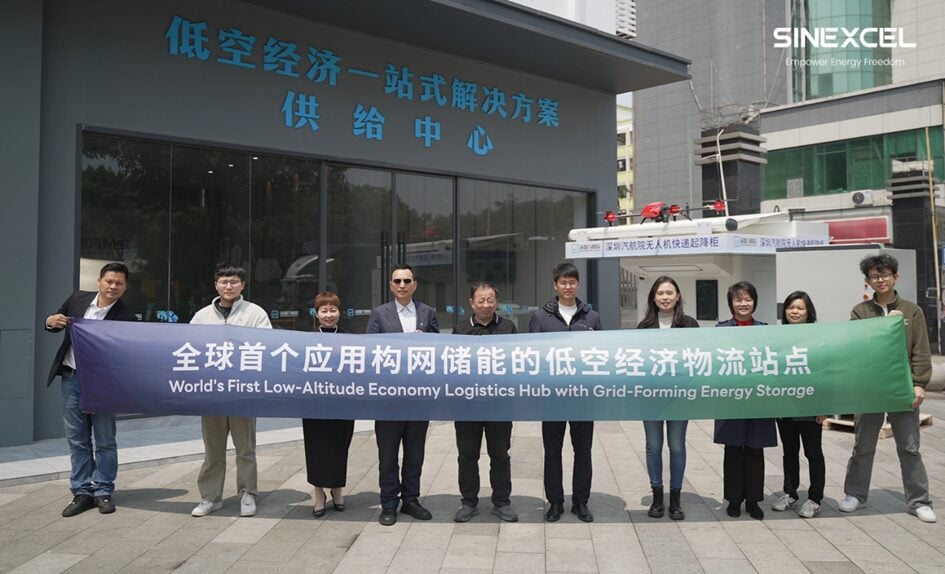
SINEXCEL has unveiled the world’s first grid-forming ESS for low-altitude logistics stationswith Shenzhen Qihay, a technology company specializing in intelligent vehicles and the low-altitude economy. This milestone validates the feasibility of grid-forming energy storage in low-altitude logistics, setting a new benchmark for integrating next-generation power systems with emerging low-altitude infrastructure.
As the industry’s first public service hub, the station features a parcel locker alongside a “Lithium + Sodium” hybrid grid-forming ESS. The locker enables AI-driven drone dispatch, smart warehousing and efficient data processing, enabling 5kg deliveries within a 15km radius. Additional commercial pilots for low-altitude logistics hubs and bases are anticipated to commence in June.
The ESS is a key achievement under Guangdong Province’s major R&D initiativeon grid-forming energy storage converters. It offers high reliability, a long lifespan and enhanced energy density, delivering robust support for next-gen urban power systems.
Drone delivery stations encounter critical challenges, in that most small drones possess a flight time of only 15–20 minutes, requiring frequent recharging. In remote areas, inadequate power infrastructure disrupts operations, while high electricity costs at rural stations constrain large-scale commercialization. The grid-forming ESS can seamlessly integrate with solar and charging stations to create a mobile, all-in-one “solar-storage-charging” energy hub, delivering timely and reliable power for remote logistics and agricultural scenarios.
Easily redeployable, the ESS can be swiftly relocated, minimizing redundant infrastructure investment and accommodating rural or emergency applications. Its long lifecycle further reduces depreciation and operational costs.

